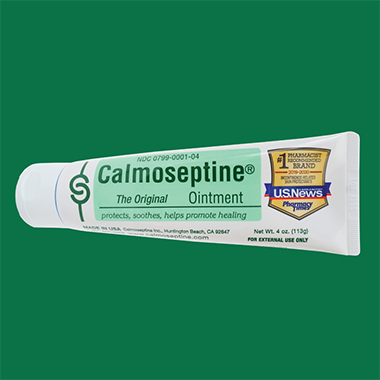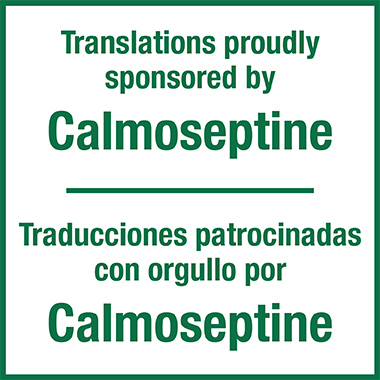Volume 41 Number 1
Index of articles in the WCET® Journal 2020; 40 (1-4)
Clinical practice
Smart H and Sibbald RG. Skin care for the protection and treatment of incontinence associated dermatitis (IAD) to minimise susceptibility for pressure injury (PI) development. WCET® Journal 2020;40(4):40-44.
Clinical research
Hedegaard CJ et al. Leakage and peristomal skin complications influences user comfort and confidence and are associated with reduced quality of life in people with a stoma. WCET® Journal 2020;40(4): 23-29.
Spencer K et al. COVID-19: impact on ostomy and continence care. WCET® Journal 2020;40(4):18-22.
Continence
Qiang L et al. Investigating ICU nurses’ understanding of incontinence-associated dermatitis: an analysis of influencing factors. WCET® Journal 2020;40(1):32-38.
Wei HH et al. Development of an incontinence-associated dermatitis prevention bundle using an evidence-based framework. WCET® Journal 2020;40(3):37-42.
Editorials
Prentice J. Life’s challenges: together we can win. WCET® Journal 2020;40(1):6.
Prentice J. COVID-19: Relativity to wound skin and ostomy care. WCET® Journal 2020;40(2):6.
Ramalho A et al. Medical device-related pressure injury in health care professionals in times of pandemic. WCET® Journal 2020;40(2):7-8.
Prentice J. Nurses and nursing - endurance and initiative. WCET® Journal 2020;40(3):6.
Gray L. Guest editorial. WCET® Journal 2020;40(4):9.
Prentice J. 40 Years of Clinical Outreach: camaraderie, caring and communication. WCET® Journal 2020;40(4):7-8.
News and views
World Council of Enterostomal Therapists®. Around the WCET® world. WCET® Journal 2020;40(1):8-9.
World Council of Enterostomal Therapists®. Around the WCET® world. WCET® Journal 2020;40(2):9-17.
World Council of Enterostomal Therapists®. Around the WCET® world. WCET® Journal 2020;40(3):7-8.
World Council of Enterostomal Therapists®. Around the WCET® world. WCET® Journal 2020;40(4):10-11.
Ostomy
Yan F and Jiang M. Application of a convex appliance to restore peristomal skin integrity: a case study. WCET® Journal 2020;40(1):10-17.
Johnson C et al. Enhancing recovery: raising awareness of everyday struggles of patients with ostomies. WCET® Journal 2020;40(1):27-31.
Jiang M et al. Successful treatment of an ileal conduit fistula with negative pressure: report of a case. WCET® Journal 2020;40(3):19-23.
Lataillade L and Chabal L . Therapeutic patient education; A multifaceted approach to healthcare. WCET® Journal 2020;40(2):35-42.
Russell S. Parastomal hernia: improving quality of life, restoring confidence and reducing the fear. The importance of the role of the stoma nurse specialist. WCET® Journal 2020;40(4):36-39.
Professional role
Ocho O et al. ET/WOC nursing – leadership lessons learned from the COVID-19 pandemic: an opinion. WCET® Journal 2020;40(3):43-46.
Chabal L et al. Results of the WCET® 2019 Membership Survey: Implications and planning. WCET® Journal 2020;40(4):12-17.
Wound
Sibbald RG and Ayello EA. Terminal ulcers, SCALE, skin failure, and unavoidable pressure injuries: results of the 2019 Terminology Survey. WCET® Journal 2020;40(1):18-26.
Black J and Cuddigan J. Skin manifestations with COVID-19: the purple skin and toes that you are seeing may not be deep tissue pressure injury. WCET® Journal 2020;40(2):18-21.
Purcell A et al. Topical analgesic and local anesthetic agents for pain associated with chronic leg ulcers: A systematic review. WCET® Journal 2020;40(2):22-34.
Smart H et al. Preventing facial pressure injury for healthcare providers adhering to COVID-19 personal protective equipment requirements. WCET® Journal 2020;40(3):9-18.
Abdi A et al. Introduction of pressure injury preventive measures and improvement initiatives for patients undergoing prolonged surgery at a government hospital in the United Arab Emirates. WCET® Journal 2020;40(3):24-36.
Henson A and Kennedy-Malone L. A quality improvement project comparing two treatments for deep-tissue pressure injuries to feet and lower legs of long-term care residents. WCET® Journal 2020;40(4):30-35.
Índice de artículos de la Revista WCET® 2020; 40 (1-4)
Práctica clínica
Smart H and Sibbald RG. Skin care for the protection and treatment of incontinence associated dermatitis (IAD) to minimise susceptibility for pressure injury (PI) development. WCET® Journal 2020;40(4):40-44.
Investigación clínica
Hedegaard CJ et al. Leakage and peristomal skin complications influences user comfort and confidence and are associated with reduced quality of life in people with a stoma. WCET® Journal 2020;40(4): 23-29.
Spencer K et al. COVID-19: impact on ostomy and continence care. WCET® Journal 2020;40(4):18-22.
Continencia
Qiang L et al. Investigating ICU nurses’ understanding of incontinence-associated dermatitis: an analysis of influencing factors. WCET® Journal 2020;40(1):32-38.
Wei HH et al. Development of an incontinence-associated dermatitis prevention bundle using an evidence-based framework. WCET® Journal 2020;40(3):37-42.
Editoriales
Prentice J. Life’s challenges: together we can win. WCET® Journal 2020;40(1):6.
Prentice J. COVID-19: Relativity to wound skin and ostomy care. WCET® Journal 2020;40(2):6.
Ramalho A et al. Medical device-related pressure injury in health care professionals in times of pandemic. WCET® Journal 2020;40(2):7-8.
Prentice J. Nurses and nursing - endurance and initiative. WCET® Journal 2020;40(3):6.
Gray L. Guest editorial. WCET® Journal 2020;40(4):9.
Prentice J. 40 Years of Clinical Outreach: camaraderie, caring and communication. WCET® Journal 2020;40(4):7-8.
Noticias y puntos de vista
World Council of Enterostomal Therapists®. Around the WCET® world. WCET® Journal 2020;40(1):8-9.
World Council of Enterostomal Therapists®. Around the WCET® world. WCET® Journal 2020;40(2):9-17.
World Council of Enterostomal Therapists®. Around the WCET® world. WCET® Journal 2020;40(3):7-8.
World Council of Enterostomal Therapists®. Around the WCET® world. WCET® Journal 2020;40(4):10-11.
Ostomía
Yan F and Jiang M. Application of a convex appliance to restore peristomal skin integrity: a case study. WCET® Journal 2020;40(1):10-17.
Johnson C et al. Enhancing recovery: raising awareness of everyday struggles of patients with ostomies. WCET® Journal 2020;40(1):27-31.
Jiang M et al. Successful treatment of an ileal conduit fistula with negative pressure: report of a case. WCET® Journal 2020;40(3):19-23.
Lataillade L and Chabal L . Therapeutic patient education; A multifaceted approach to healthcare. WCET® Journal 2020;40(2):35-42.
Russell S. Parastomal hernia: improving quality of life, restoring confidence and reducing the fear. The importance of the role of the stoma nurse specialist. WCET® Journal 2020;40(4):36-39.
Función profesional
Ocho O et al. ET/WOC nursing – leadership lessons learned from the COVID-19 pandemic: an opinion. WCET® Journal 2020;40(3):43-46.
Chabal L et al. Results of the WCET® 2019 Membership Survey: Implications and planning. WCET® Journal 2020;40(4):12-17.
Herida
Sibbald RG and Ayello EA. Terminal ulcers, SCALE, skin failure, and unavoidable pressure injuries: results of the 2019 Terminology Survey. WCET® Journal 2020;40(1):18-26.
Black J and Cuddigan J. Skin manifestations with COVID-19: the purple skin and toes that you are seeing may not be deep tissue pressure injury. WCET® Journal 2020;40(2):18-21.
Purcell A et al. Topical analgesic and local anesthetic agents for pain associated with chronic leg ulcers: A systematic review. WCET® Journal 2020;40(2):22-34.
Smart H et al. Preventing facial pressure injury for healthcare providers adhering to COVID-19 personal protective equipment requirements. WCET® Journal 2020;40(3):9-18.
Abdi A et al. Introduction of pressure injury preventive measures and improvement initiatives for patients undergoing prolonged surgery at a government hospital in the United Arab Emirates. WCET® Journal 2020;40(3):24-36.
Henson A and Kennedy-Malone L. A quality improvement project comparing two treatments for deep-tissue pressure injuries to feet and lower legs of long-term care residents. WCET® Journal 2020;40(4):30-35.



